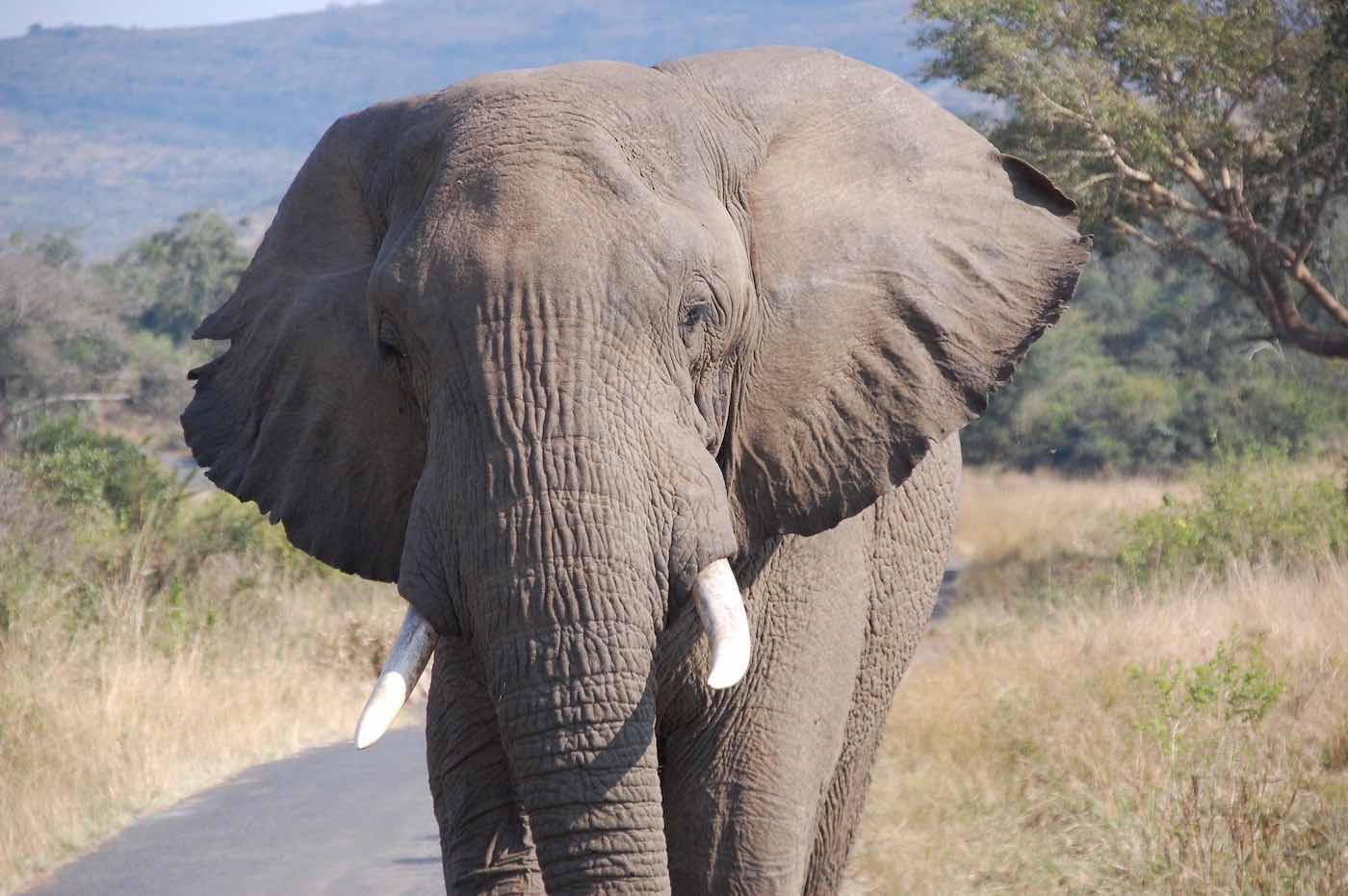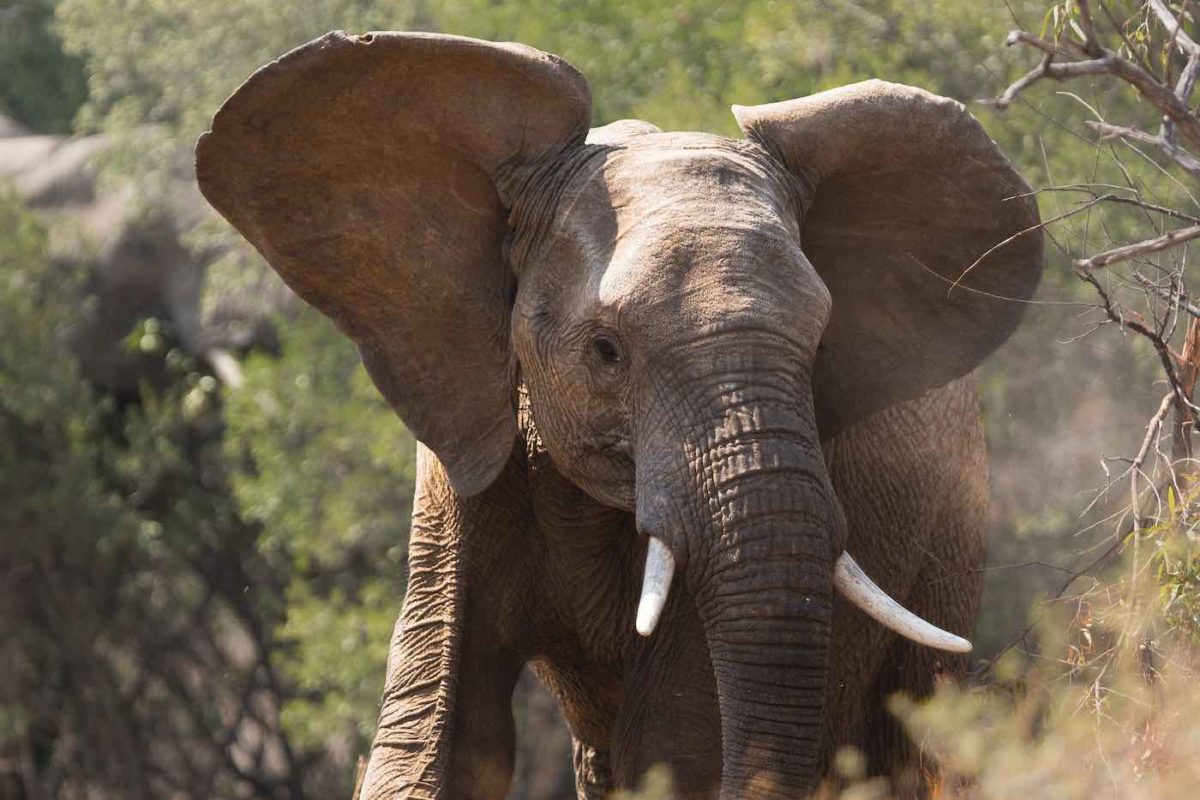For an elephant, their huge ears are crucial to their survival beyond only hearing.
The large size of the elephant ears allows them to regulate their body temperature, mainly to drop their body temperature during hot days.
Blood vessels in the ear are close to the surface, so when they need to cool down, they flap their ears to create airflow and release heat.
Read on to find out more reasons why the Elephants have such big ears as well as differences in ear size between the different species of Elephants.
Facts about the Elephant Ear
Here are the top 9 facts about the Elephants ears which you may find interesting:
- The elephant ear is made up of a thin layer of skin that is covered in hair.
- The average ear size of an adult elephant is about 0.6m (2ft) in length and 0.5m (1.6ft) in width.
- Elephants use their big ears to regulate their body heat, mainly because elephants have very few sweat glands.
- The large surface area of an elephant’s ear helps to dissipate heat and keep them cool in hot climates.
- To stay cool, elephants will flap their ears which creates airflow and releases heat from their body.
- The blood vessels in an elephant’s ear are close to the surface, so when they need to cool down, they can increase blood
- Their large ears also help them to pick up sounds over long distances.
- The African elephant’s ear is larger than the Asian elephant’s ear.
- The African elephant’s ear has more blood vessels than the Asian elephant’s ear.
Elephants use their ears as fans
Elephants big ears not only help them to hear better, but they also use them as fans to keep cool. When it’s hot, elephants will flap their ears to create airflow and release heat from their body. The Elephant body can adjust its’ temperature by 3 to 5 degrees using their ears!
The big ears of an elephant are an important part of their anatomy, helping them to stay cool in hot climates and to pick up sounds over long distances.

Elephants also use their ears to signal their presence and to communicate
Elephants also use their ears to communicate. They make a variety of sounds by flapping, folding, and wiggling their ears that can convey everything from aggression to subtle emotional states.
The size and shape of an elephant’s ears are unique to each individual, much like human fingerprints, which helps other elephants identify one another.
Elephants have excellent hearing
Elephants have excellent hearing and can pick up low-frequency sounds that are below the range of human hearing.
They use their hearing to communicate with each other over long distances. Being able to hear long distances also has it perks when listening for threats.
Different elephant species have different sized ears
There’s a distinct size difference between the Asian elephant and African elephant.
The African elephant’s ear is much larger than the Asian elephant’s ear. The African elephant’s ear also has more blood vessels than the Asian elephant’s ear.
This is likely because the African continent is generally hotter than Asia, so the African elephants need larger ears to help them stay cool in extreme temperature environments. The smaller ears of Asian elephants are more suited to the cooler climates of their geographical region.
In terms of looks, these are the main differences:
- The African elephant’s ear is shaped like the continent of Africa (!)
- The African elephant’s ear is darker in color than the Asian elephant’s ear.
- The African elephant’s ear is more wrinkled than the Asian elephant’s ear.
Recommended reading: What are the Differences Between an African Elephant and an Asian Elephant?
Summary
Elephants have big ears because they need them to stay cool in hot climates and to communicate with each other over long distances. Their large ears also help them to hear better than most other animals.
The African elephants ears are larger than the Asian elephants ears, and the African elephant’s ear is darker in color than the Asian elephant’s ear. The African elephant’s ear is also more wrinkled than the Asian elephant’s ear.
Elephants use their big ears to regulate their body heat, mainly because elephants have very few sweat glands.
The large surface area of an elephant’s ear helps to dissipate heat and keep them cool in hot climates. To stay cool, elephants will flap their ears which creates airflow and releases heat from their body.
The blood vessels in an elephant’s ear are close to the surface, so when they need to cool down, they can increase blood flow to their ears which helps to dissipate heat.
Their large ears also help them to pick up sounds over long distances.
FAQ about Elephants Ears and their size
The main reason elephants have big ears is to help them stay cool in hot climates.
Elephants flap, move, or wave their ears to cool down their body temperature. The large surface area of an elephant’s ear helps to dissipate heat and keep them cool in hot climates.
African elephants have bigger ears because they live in hotter climates than Asian elephants.
When an elephant feels hot, it will flap its ears to create airflow and release heat from its body.
African elephants do have sweat glands, but they are not very effective at cooling the body. This is one of the reasons why African elephants have larger ears than Asian elephants, as their large ears help to dissipate heat.
Yes, elephants use their ears to communicate with each other. They make a variety of sounds by flapping, folding, and wiggling their ears that can convey everything from aggression to subtle emotional states.
An elephant has a very thick skin that helps to keep them warm in cold climates. They also have a layer of fat under their skin that provides insulation. Additionally, elephants have a network of blood vessels in their ears that they can use to regulate their body temperature.
The African elephant’s ear is shaped like the continent of Africa.
